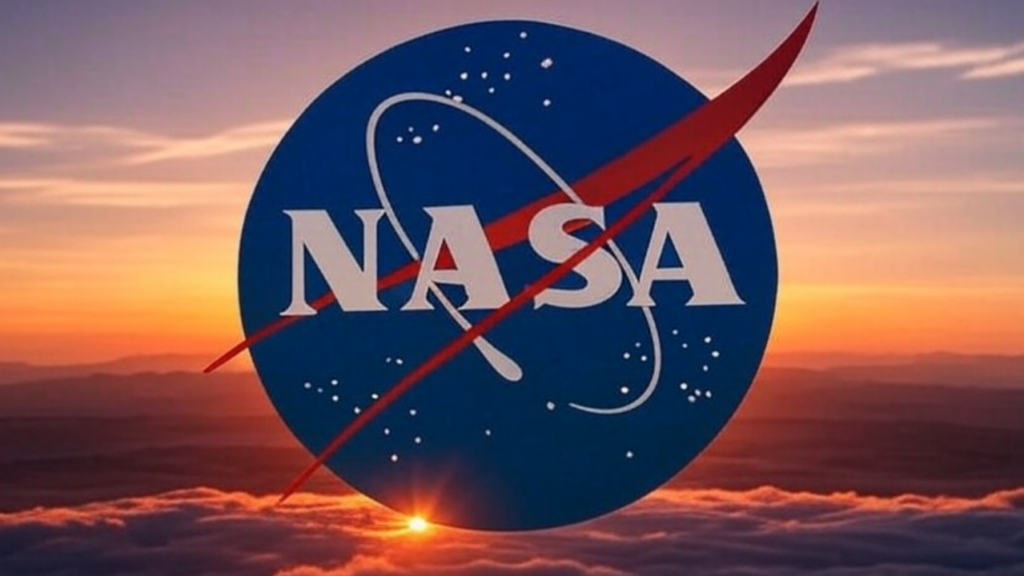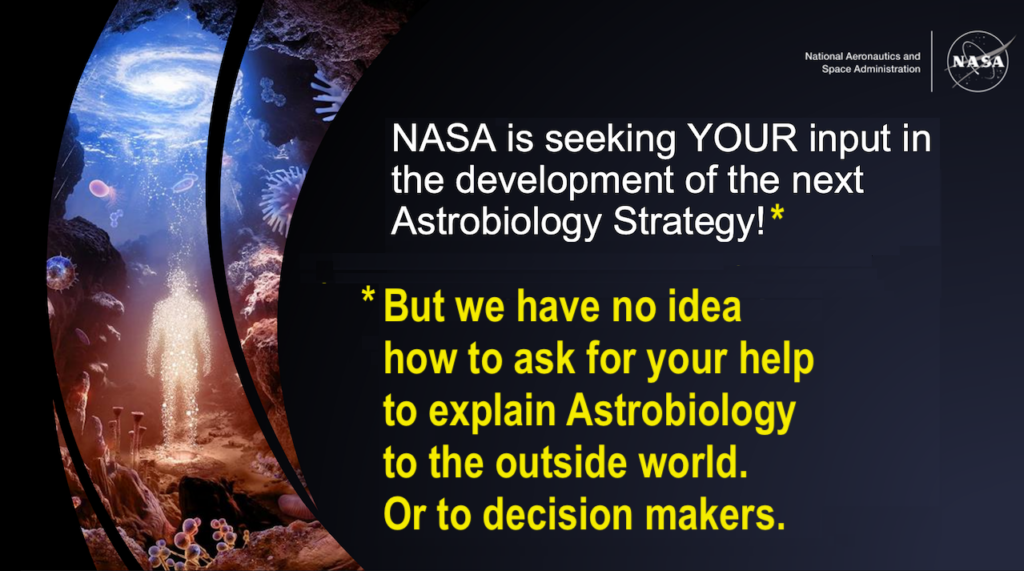After 5,000 Days On Mars Opportunity Still Does Science

New Day for Longest-Working Mars Rover
“NASA’s Mars Exploration Rover Opportunity recorded the dawn of the rover’s 4,999th Martian day, or sol, with its Panoramic Camera (Pancam) on Feb. 15, 2018, yielding this processed, approximately true-color scene.”
5,000 Days on Mars For Mars Rover Opportunity
“The Sun will rise on NASA’s solar-powered Mars rover Opportunity for the 5,000th time on Saturday, sending rays of energy to a golf-cart-size robotic field geologist that continues to provide revelations about the Red Planet.”
Mars Rover Opportunity Keeps Finding Surprises
“One possible explanation of these stripes is that they are relics from a time of greater obliquity when snow packs on the rim seasonally melted enough to moisten the soil, and then freeze-thaw cycles organized the small rocks into stripes,” Arvidson said.”
 Keith’s note: I asked former NASA Administrator Sean O’Keefe to look back at Opportunity’s exploration of Mars:
Keith’s note: I asked former NASA Administrator Sean O’Keefe to look back at Opportunity’s exploration of Mars:
“This is a stunning achievement for a capability we thought would survive long enough for a sprint and instead, it’s completed a marathon and still going! Opportunity was designed, built, flown and landed with materials and processes we had available. The limited planetary alignment opportunity forced the project team to make due with what they had. The performance since 2004 had surpassed anything anyone thought imaginable. If back in 2004 NASA had dared to declare what Opportunity has achieved as the mission objective, the legion of critics would have told us the cost, schedule and mission were unrealistic. Maybe that would be worth a hearing!”
Alas, the Trump Administration is not interested in supporting Opportunity after FY 2019. This is not the first time that the White House has tried to kill funding for Opportunity (the Obama folks tried too). Congress will likely step in and halt this as they have in the past. That said, maybe its time for someone to start a crowd funding effort. This White House wants NASA to do the public private partnership things, so why not take them up on that offer?
Source: NASA FY 2018 Budget Estimates page PS 69










Obama threatened to kill Opportunity year after year, only Congress bailed us out.
Yep:
https://www.space.com/28943…
Yes, it’s a project that needs to continued to be funded.
Is opportunity really producing science that’s worth more than switching resources to a different project? As I recall, it’s mostly dead or dying.
You are very wrong! Do a little leg work next time, oh never mind I’ll do it for you this time: https://mars.nasa.gov/mer/h…
You clearly have been paying no attention to the project.
It’s limping a little, but not too bad. They’ve figured out how to drive it while keeping load off the wrong parts.
In terms of the science, I think just the camera is worth it. (And I’m a non-imaging, wiggly-line sort of scientist…) The best resolution we have from Mars orbit is 30 cm. I’d say a real, serious look at a place might require 1 cm resolution. The rovers can do that out to a range of perhaps 30 meters. From the four rovers we’ve sent to Mars, we’ve seen a track of about 30 meters by 70 kilometers at that resolution. Adding the view from stationary landers doesn’t add much to that. So we’re talking about two square kilometers. That’s a bit over a hundred millionth of the surface of Mars. I’d have to say more would be worth quite a bit.
I will admit not every bit of that surface will be interesting. I hope I won’t offend people from Kansas or Manitoba, but large parts of the Earth’s surface look pretty much the same for miles and miles. But two square kilometers along three traverse routes and four other landing sites is hardly even scratching the surface.
Well, the pictures might be interesting from the perspective of it being a different world but if you walk past the Moulan Rouge in Paris at 1cm an hour, by the time you’ve gone for 3 weeks, you’re still outside the Moulan Rouge, seeing pretty much the same stuff from a mildly different angle.
If the camera (which still works) is to be of any real use then I would suggest that rather than constant monitoring, the rover just be told to travel 1 mile ahead. Then just check in on it approximately every 5 miles (I gather it travels at an average speed of 0.89 inches a second so 1 mile would take 56,390.4 seconds or 15.6 hours. 5 miles would therefore merit a check every 4 days or you could just check on it once a week.
I don’t really expect something that’s 55 times past its use-by date to last much longer anyway so they’re probably just about right about abandoning it and going onto something new, fresh and in better condition.
You clearly have no idea how this mission operates not what it has discovered since it landed and what it is still capable of doing.
Reference my earlier comment about the usefulness of supposedly “obsolete” hardware in this thread:
1) I am typing this comment via the old D620, as it is smoking hot for its age, and I have it posted to my kitchen table for research and work when I am having dinner (I am an acknowledge workaholic).
2) How about taking the $12.5 million from the SLS budget? Now there is black hole of wasted U.S. taxpayer dollars, if I ever saw one.
3) Someone pick up the phone and call Elon. Privatize its operation by SpaceX’, share the results in an “open source” manner, and use it for his plans. Don’t simply shut off a working resource. Musk has the vision and the pockets to manage Opportunity, and can use the rover as yet another grand research and measurement tool for SpaceX’ Mars ambitions.
4) Again: DO NOT THROW AWAY THE INVESTMENT OF WORKING physical assets as a result of arbitrary bureaucracy and uninformed decision making. My good old D620 is still humming right along, upgraded to 100MB wifi, SSD, RAM, and Windows 10 Pro, and short of taking a bullet, sledgehammer, clumsy drop, or a critical failure of the motherboard or CPU (which I can replace for pennies), I will use it as long as I can get reasonable and effective results from it.
Proof…
https://uploads.disquscdn.c…
Actually, the 90-day prime missions was based on a bad estimate. They expected dust to settle on the solar panels, and that would cut power. After 90 days, they expected the rover wouldn’t have enough power to keep going. After landing, they discovered that wind, especially gusts, does a good job of clearing dust off the solar panels. So the 90-day lifetime doesn’t reflect the real lifetime of the hardware.
In terms of operations, Opportunity has been averaging a bit over 9 meters per day, or around 40 cm/hour (not 1.) But they can’t just command it to go one mile on its own. It’s got some ability to find its own way, but that’s pretty limited. The microprocessor is only 20 MHz RAD6000, and about as powerful as commercial processors in from the mid-1990. Operationally, they have to do a lot of sending back images, having people on Earth plot a course around rocks and other obstacles, and send that up. I think they do that about once per day.
As far as ditching it for something newer, it cost something like $500 million to build it and get it to Mars. It costs about $12 million per year to operate it. At 14 years of operations, that’s a develop/build/launch cost of $35 million per year of on the surface. In effect, the mortgage isn’t close to being paid off yet.
Yes, being up close is good. But also consider that the FH would make it possible to place a NRO class recon satellite in orbit that would probably give the same level of resolution. A great tool for taking pictures of the rovers from orbit 🙂
Very nice to see a new voice here – but a warning; this place is inhabited by people, unlike me, who actually know what they are talking about. Tough crowd 🙂
I’m looking at this from a practical viewpoint. Is tge return from this extended mission worthy of the man hours over a new mission with a more capable vehicle?
Certainly I can ride a horse from New York to Los Angeles but it’s more efficient in time to fly. Certainly I’d miss seeing some countryside on the way but given that the vast majority is going to be urban sprawl, I don’t think I’d miss much.
Fantastic achievement. Any chance future Rovers could be fielded that are upgrades of this design? Better computers, software and cameras, I mean. Plus better solar arrays that can also shake off the dust? The Curiosity and it’s successor are amazing. But they are ‘Battlestar Galacticas’ compared to Opportunity & Spirit.
Yes, I wonder how many a FH could deliver to Mars in a single launch? The FH is able to launch about 16,000 kg to Mars, 16 times the payload of Delta II which was used for the rovers. That implies 16 rovers. At $150 million for a NASA launch that is only $9.4 million each. If a private foundation does it the price would fall to only $5.6 million each plus the cost of the rover itself. I wonder how many universities around the world would pay $10-12 million to own their own Mars rover?
Imagine the science if you had over a dozen rovers at different locations including the poles and inside some of canyons where water is available. And the views of the surface.
Yes, FH is really a game changer in terms of what is possible now.
It’s not quite that easy. The two rovers cost $870 million overall, for design, fabrication, launch and prime mission operations. And that isn’t FY18 dollars, so add a decade and a half of inflation. But most of that was non-recurring engineering costs to develop them and the launch costs. So you aren’t too far off.
You’d need to do some serious redesign work. Many of the parts (especially electronics) would be either out of production or hopelessly obsolete. There are definitely things they learned in the process of building and operating those rovers, and you’d want to take that experience into account when designing version 1.1. A real management problem would be keeping that under control. Otherwise, the development costs end up being as much as starting over from scratch.
If you’re really talking about a dozen or more of them, you can probably be more fault tolerant. One in ten failing early wouldn’t be the end of the world.
And then there is the cost of operations and telemetry. The current budget for Opportunity is $12 million per year. A university exploiting cheap, student labor could do better. But it’s still not going to be cheap. And NASA doesn’t have the deep space network antennas, nor the Mars orbiters with relays, to support sixteen MER-class rovers.
That said, and accounting for inflation and adding extended mission operation cost, the two MER rovers probably cost over half a billion each. With Falcon Heavy launch costs, building many of them, and allowing for all the other costs I mentioned, I’d be surprised if we couldn’t do a dozen MER-class rovers for the same price as the MER missions. So maybe $50 million each, not $10 million. I wouldn’t ask how many universities could afford that; I’d ask how many rich alumni would donate that much for their university to have a Mars rover.
But remember, the cost to launch a Falcon Heavy is only $90 million for a private party. As for the cost of the rovers, their landing system could probably stay the same so you are just looking at updating the rovers themselves. Actually given the huge advances in AI and robotic systems I would probably let each university just build their own and only charge a flat $9 million each for the FH and bouncing lander that would bring them to the surface. You would see a lot more creativity in design that way.
The Deep Space System is another problem. Again it shows NASA is just not ready for the new Space Commerce Age. Just as the BFR will have four times as many seats as their are astronauts at NASA, NASA is also not ready to handle all the missions the FH makes possible. It’s like folks used to using the old dial up modems getting access to a 50 mb WiFi connection. The possibilities are beyond their imagination.
It is like the transcontinental railroad all over. Before it if a scientist wanted to explore the West they needed to either link up with an army surveying party or spends lots of money outfitting their own. They could only carry what they needed, including food, on pack animals or ox carts. After the railroad all they needed to do was buy some tickets for themselves and the students they took with them. Yes, that is why there was such a huge explosion in knowledge of western geology, botany, entomology, etc., in the decades following it. Why they even were able to start building observatories on the high mountains!
Never throw out something which works.
Simple example – I have a 2007 -era Dell D620 Laptop which I’ve upgraded the hard drive on to a very late model SSD, and bumped the RAM to the limit allowed by the BIOS and motherboard architecture. It runs a complete stripped out and lean version of Windows 10 Pro 32-bit operating system. I can do nearly everything I need to do on it, and synchronize it via OneDrive with my primary laptop. Excellent for travel applications and low risk for financial loss of damaged or lost on the road.
Friends tell me frequently to “throw it out”, and get something new.
They also spend thousands of dollars every two years in the egregious upgrade cycle information tech has built into it.
A $1200 investment in early 2007 has lasted me over ten years.
It still operates quite well and meets my needs.
Please explain *why* terminating funding of Opportunity Operations makes sense when considering the investment made to get it to Mars, it still works, and for a fraction of the cost of a new rover, delivers great science and usefulness?
Yet, that is exactly what NASA has done in the past, turning off the Viking landers and Apollo science stations. The mission is over, time to move on seems to be another dysfunction part of culture at NASA.
Except NASA didn’t turn off the Viking landers. At least not on purpose. One died from a power system failure and one was accidentally mis-commanded in a way that caused it to point the antenna away from the Earth.
Sometimes NASA does turn spacecraft off deliberately. But that’s generally because they don’t have anything left to do. What would you do with a space telescope designed to image the whole sky at microwave wavelengths, once it’s imaged the whole sky? You could do it again, to see if anything changes from year to year (it doesn’t, at least not enough to mention), but after that? Sometimes someone comes up with a new application (for example, WISE, Wide-field Infrared Survey Explorer, was re-tasked as a near Earth asteroid surveyor.) But yes, sometimes NASA does pull the plug on a still-viable spacecraft. That isn’t unique to NASA; the European Space Agency sometimes does as well.
If the money to continue is allocated in the budget and then Opportunity dies prior to its distribution…what happens to the allocated funds?
That might be why there isn’t any funding listed in the out years. It isn’t uncommon for the official budget to read zero for a mission when they really mean, “we don’t know if it’ll still be around or if another mission extension will be approved.” That happened to Cassini several times.
But if they do have money budgeted and a spacecraft fails, the money still gets spent. First, the mission would probably go into overdrive for a few months, trying to reestablish contact, revive or otherwise recover the spacecraft. Then there’s probably a formal investigation into the cause of the failure. After that, flight projects usually involve a fair amount of closeout work. That might easily account for a quarter of a year of funding. Then there are related programs which might be short on money (say the Mars Data Analysis program, funding scientists to study data which has previously been collected.)